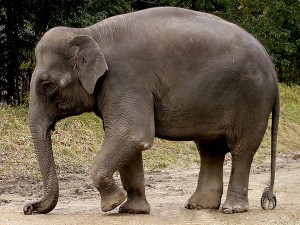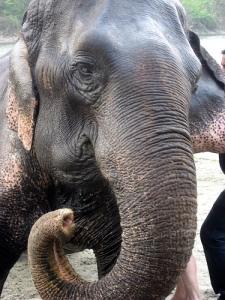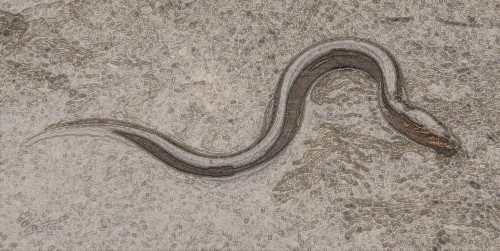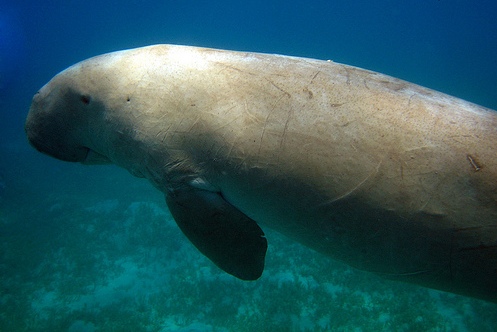 The elephant is the national heritage animal of India. It is the finest example of a species that is tough to look at but with the kindest of hearts. The jumbos are social animals that love, cry, play and live together as a family for a lifetime. As Joyce Poole quoted in The Fate Of The Elephant,
The elephant is the national heritage animal of India. It is the finest example of a species that is tough to look at but with the kindest of hearts. The jumbos are social animals that love, cry, play and live together as a family for a lifetime. As Joyce Poole quoted in The Fate Of The Elephant,
“Whether sad, angry, distressed, eager, or playful, elephants are this in a big way.”
Here are more interesting facts about these animals with a big heart.
Asian Elephant Family
The Indian elephant (Elephas maximus indicus) is a one of three subspecies or races of the Asian elephant ”Elephas maximus”. The other two subspecies of the Asian elephant are E. m. sumatranus in Sumatra and E. m. maximus in Sri Lanka. The Indian elephant is larger, has longer front legs and a thinner body than the Asian elephant found in Thailand.
Airy Ears
- Elephant ears radiate heat to keep them cool.
- An African Elephant’s ears resemble the continent of Africa whereas Asian elephants have a more rounded and smaller ear lobes.
- These animals are so fond of water they enjoy a shower whenever they can by sucking water from their trunks and spraying it on themselves. Surely, the first natural showers of the world!
Trunk Call
- An elephant´s trunk, a union of the nose and upper lip, is a highly sensitive organ with over 100,000 muscle units.
- While most animals use their nose to just breathe, the elephant uses it to trumpet, grab things, smell, spray water and of course breathe too.
- Asian Elephants have a finger like feature at the end of their trunk that they use to grab objects. Their African cousins have two of these fingers.
- Sometimes the elephants trunk becomes so heavy they need to rest it over their tusk.
-
Contrary to popular belief elephants do not drink from their trunk. They just use it to fill water and pass it to the mouth.
Food for Thought
- Elephants look mighty and can crush a lot of animals under their feet, but unless provoked they are mild animals and totally herbivorous in nature.
- An adult elephant can consume 138 kgs of food each day 300 pounds.
-
They love to eat roots, steps, fruits of all kinds.
Tough Tusk
- The tusk is used in a multiple ways too – to dig for roots and water, strip bark, and fight with each other.
- Most elephants in the wild are killed for their tusks, each fetching thousands of dollars to the poachers.
Jumbo Family
- Female elephants are known as cows and adult males as you might have guessed, Bulls.
- The female have a pregnancy period of 22 months!
- While females tend and look after the young, males roam around alone.
- Average life span is 60-70 years.
- Asian elephants are more closely related to the extinct mammoth than the African elephants. See here for details.
Endangered or not
The Indian elephant population is estimated to be between 20,000 and 25,000 in the wild. Although the WWF considers it widely distributed the species is still endangered. The biggest threat is from human encroachment, poaching for tusks, deforestation and constant human animal conflict.
Related Stories:
Elephants get Photo Identity Cards
Villagers give up their Land for Elephants
Elephants saved from being Hit by a Train in Assam







Elephants, like most herbivores, have sybiiotmc bacteria in their gut that helps them break down their food. They are not born with these bacteria the only way for a calf to get them is to eat the faeces of its mother or other elephants. Some of the bacteria are excreted with the faeces, and by eating them the calf acquires the essential bacteria.Also, an elephant’s digestive system is not very efficient. What comes out is not that much different from what goes in it still contains some nutritional value that the gut failed to extract. Therefore, an elephant can eat another elephant’s (or its own) dung and gain some good from it. In order to compensate for this digestive inefficiency, elephants have to eat almost round the clock to ensure they get enough nutrition from their food.
Thanks for sharing this valuable information. Very interesting.
This page is awesome!
Thanks for your info it was very useful and informative
Why do some Indian elephants have pink or white spotted ski & long hair in their ears & even all over their bodies?
Thank you Denise for your query and apologies for replying so late.
The answer to your question is, as some elephants age, they lose the skin pigments and these areas begin to look pink. It’s a natural phenomenon. Regarding hair, African elephants too have hair on their skin, especially the back, but it’s not as prominent as Asian elephants’. The hair helps mud or dirt from sticking on their skin.
It is really great information and the way you put it here really amazing all the points you make in very simple manner. Thanks, this blog as want know, about the elephant and your blog is great as compare to other blogs on this topic.
Dear sirs,
I am a art teacher who is doing a art project on endangered animals in India. I would love to have actual pictures or posters of the Indian elephant. Thank You. Julius Giardina
225 East 95 St Apt 21-d. NY NY 10128
Hi Julius, Thank you for writing to us. Let us know how we can help. Do you want us to send you high resolution images by mail?
hi this page is really very helpfull for my studies thank you